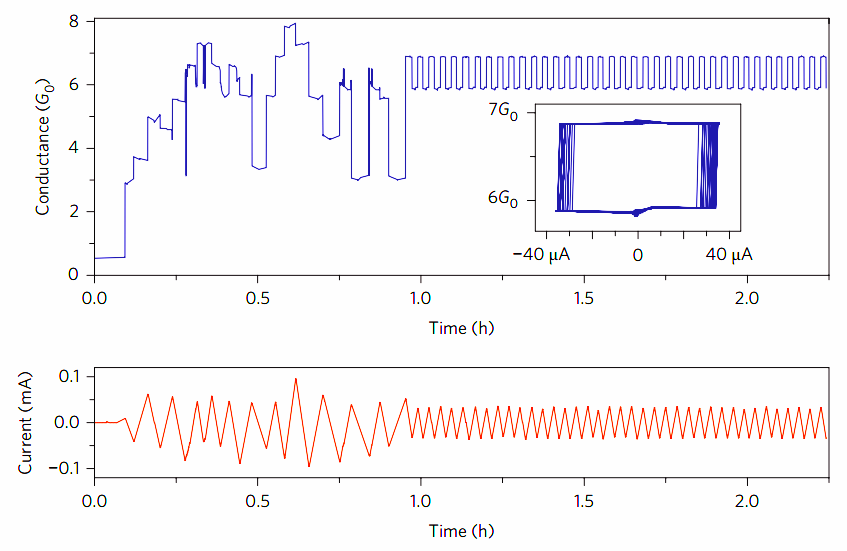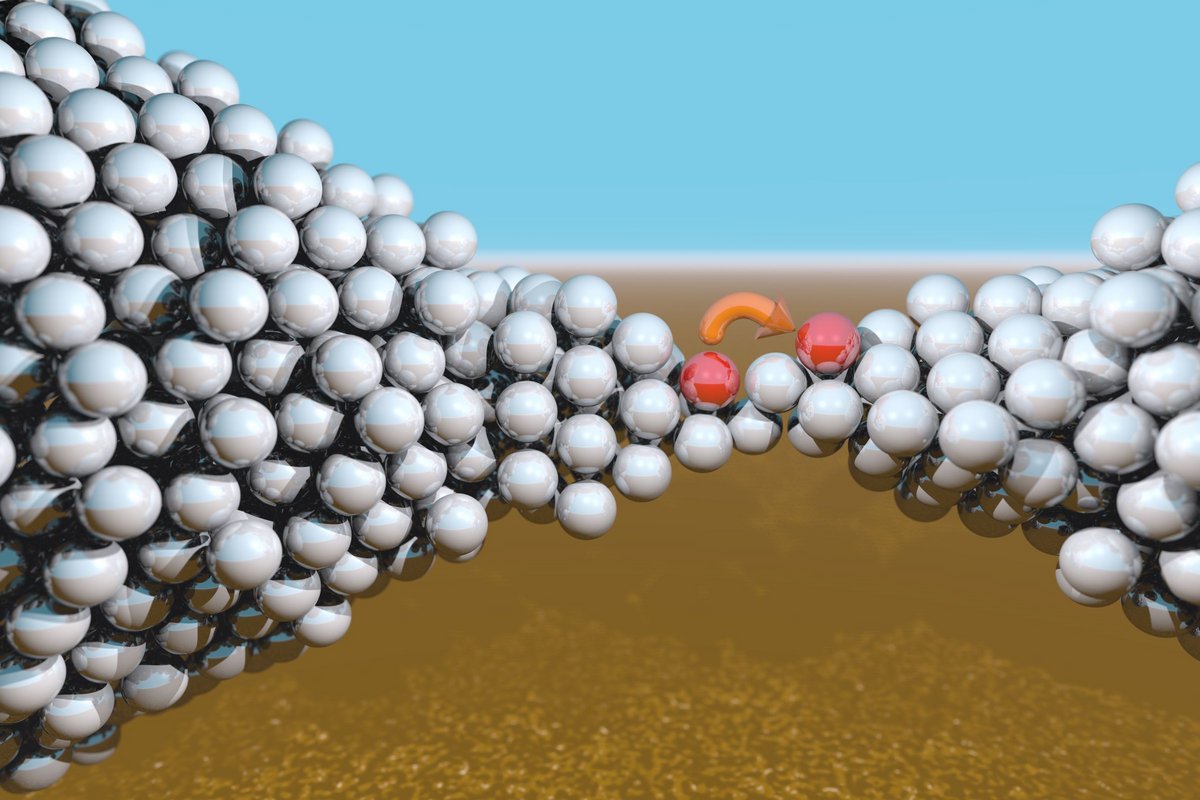
We investigate electromigration effects in atomic-size contacts of aluminum (Al), lead (Pb), niobium (Nb) and gold (Au), fabricated with the mechanically controllable break junction technique at temperatures T < 1 K. We observe discrete current-driven conductance changes ΔG due to rearrangements at the atomic scale.1 In particular situations, a reversible switching between two conductance values is observed (> 500 repetitions) which we attribute to the formation of preferred atomic configurations (see figure 1).

An increasing current is driven through an atomic contact until a jump in the conductance value signals an atomic rearrangement. The same procedure is repeated in the opposite current direction, and so on until the system is trapped in a bistable switching state. An artistic view of such a process can be seen in figure 2.
At low temperatures, Al, Pb and Nb become superconducting, and so-called multiple Andreev reflections can be observed. This effect gives the possibility to observe individual conductance channels in the contact to get more detailled information.
Publications
- Schirm, C.; Matt, M.; Pauly, F.; Cuevas, J. C.; Nielaba, P.; Scheer, E. Nat. Nanotechnol. 2013, 8 (9), 645–648
- Scheer, E.; Joyez, P.; Esteve, D.; Urbina, C.; Devoret, M. H. Phys. Rev. Lett. 1997, 78 (18), 3535.
- D. Weber and E. Scheer, Superconducting properties of lithographic lead break junctions, Nanotechnology (2018). URL: http://iopscience.iop.org/article/10.1088/1361-6528/aa99b8
Information
Contributors: D. Weber
Former contributors: C. Schirm
External cooperations: F. Pauly, P. Nielaba
Fundings: DFG
Period: 2014 - 2018
